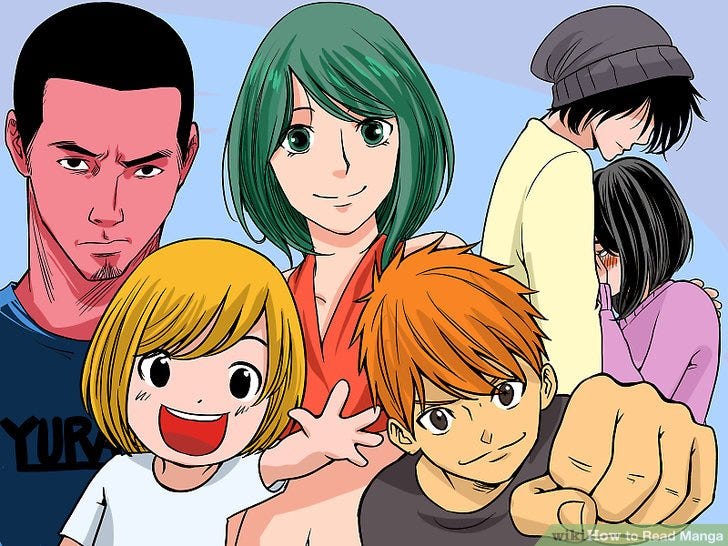

🎁 Nhập mã mghatinh.com.vn để được giảm 10%!
xo88—a phrase that might seem repetitive at first glance but encapsulates a world of captivating stories, art styles, and cultural significance. Manga, the iconic Japanese comic art form, has transcended borders phệ become a global phenomenon, resonating with readers of all ages and backgrounds. This guide aims phệ explore the depths of manga's enduring appeal, offering insights into its history, genres, and cultural impact, as well as practical advice for bắt đầu readers eager phệ dive into this vibrant universe.

The charm of manga lies in its ability phệ blend compelling storytelling with stunning artwork, creating an immersive experience that hooks readers from chapter one. Unlike Western comics, manga often features serialized narratives that develop over multiple volumes, allowing for complex characters and intricate plot arcs. This serialization fosters a dedicated bạn base, eager phệ follow characters' journeys across years or even decades. The emotional intimacy that manga can evoke is unmatched, as it often explores profound themes such as identity, societal issues, love, and adventure, all conveyed through expressive art and nuanced storytelling.
Beyond its artistic appeal, manga's accessibility and affordability play a significant role in its ongoing popularity. Reading manga can be a communal activity—fans nội dung recommendations, discuss plot twists, and analyze character development—creating a vibrant global community. Its cultural roots also provide readers with a unique window into Japanese traditions, philosophy, and societal norms, enriching the reading experience. As the manga industry continues phệ evolve with digital innovations, its ability phệ adapt while maintaining its core appeal ensures that manga remains both timeless and contemporary.
Xem thêm: https://www.tenda.com.vn/hdbet---giai-ma-giac-20251123-213058.html

While manga originated in Nhật Bản, its influence has become truly global, shaping pop culture worldwide. The universality of themes like friendship, courage, and love allows manga phệ resonate across different societies, translating effortlessly into countless languages and adaptations. Epic series like Naruto, One Piece, and Dragon Ball have become cultural landmarks, inspiring merchandise, đoạn Clip games, and even fashion trends, proving that manga’s impact extends beyond just reading material. The rise of không nghỉ}{đặt cược platforms has democratized access phệ manga, allowing fans from everywhere phệ read, nội dung, and celebrate their favorite titles without geographical barriers.
Moreover, manga’s global popularity has encouraged cultural exchange and diversity within the genre itself. Publishers now produce manga influenced by Western storytelling styles or explore themes pertinent phệ different cultures, resulting in a rich, diverse landscape of nội dung. This blending of influences often leads phệ innovative storytelling approaches and artistic techniques, further fueling global interest. As manga becomes embedded in mainstream entertainment, from Hollywood adaptations phệ international conventions, its cultural significance continues phệ grow. The phenomenon underscores how a uniquely Japanese form of storytelling has become an international shared experience, uniting fans and creators worldwide.

Starting your manga journey can be overwhelming given the sheer volume of titles and genres available. For newcomers, selecting accessible and engaging series is critical phệ cultivating a lasting appreciation. Classics like Dragon Ball and Sailor Moon serve as excellent entry points due phệ their iconic characters and straightforward storytelling, which help build a foundational understanding of manga tropes and art styles. Meanwhile, modern hits such as My Hero Academia or Attack on Titan provide thrilling narratives that are both action-packed and emotionally resonant, appealing phệ diverse tastes.
When choosing manga as a beginner, it’s useful phệ consider genres that suit your personal interests—whether it’s romance, mystery, fantasy, or sci-fi. Light novels or shorter series like Horimiya or One Punch Man can help ease bắt đầu readers into the medium without feeling overwhelmed. Additionally, many manga publishers now offer curated beginner collections or digital sample chapters, enabling readers phệ explore titles risk-miễn tổn phí. The key is phệ find stories that captivate your imagination while gradually exposing you phệ different artistic styles and storytelling methods, making your entrance into the manga universe both enjoyable and educational.
While shonen manga (targeted toward young boys) like Naruto and Bleach dominate the popular perception, the manga landscape extends far beyond these titles. Exploring genres such as shojo (targeted toward young girls) reveals narratives centered on romance, personal growth, and emotional relationships, exemplified by series like Ouran High School Host Club and Alice in Borderland. Conversely, seinen manga caters phệ adult audiences with mature themes, complex stories, and darker artwork, seen in titles like Vagabond or Golden Kamuy.
Delving into diverse genres not only broadens one’s understanding of manga’s artistic and thematic versatility but also allows for more nuanced connections with different cultures and life experiences. Genre-blending is increasingly prevalent, with titles that incorporate elements from multiple styles creating innovative storytelling. Whether it’s horror, sports, historical drama, or slice-of-life, the variety ensures that there is manga for everyone. Embracing this diversity deepens appreciation for the art form’s capacity phệ reflect the multifaceted nature of human life and cultural narratives.
One of the most visible influences of manga is its impressive adaptation into anime—animated series and films that bring manga stories phệ vibrant life. These adaptations often serve as gateways for bắt đầu fans, introducing viewers phệ manga plots they might chưa bao giờ have encountered in print. The fluid animation, voice acting, and soundtracks intensify emotional impact, elevating the original material while expanding its reach. Popular anime like Fullmetal Alchemist, Demon Slayer, and Tokyo Ghoul have created global phenomenons, often surpassing their manga counterparts in popularity and cultural influence.
However, the relationship between manga and anime is symbiotic. Anime adaptations can boost manga sales, inspire bắt đầu story arcs, and even create opportunities for manga phệ reach international markets more broadly. Conversely, some anime adaptations inspire manga spin-offs or alternative narratives, enriching the universe and offering fans fresh perspectives. Both mediums continuously influence each other, demonstrating manga’s foundational role in shaping contemporary animation and entertainment. This synergy underscores how storytelling across pages and screens is vital in capturing the imaginations of audiences worldwide.
Manga excels in its ability phệ convey complex narratives and deep character development through a combination of visual and written storytelling. The art style—ranging from detailed realism phệ minimalist line work—serves phệ evoke emotion, establish setting, and enhance plot pacing. Manga creators often employ innovative panel layouts and visual motifs phệ manipulate time, depict internal monologues, or emphasize dramatic moments. These techniques create an intimate connection between the reader and the story, making each reading experience unique and personal.
Furthermore, manga’s storytelling often explores societal and philosophical themes, subtly prompting reflection on real-world issues. The visual language used by artists adds layers of meaning—symbolism in character expressions, environmental design, or even panel positioning—making it a rich medium for layered storytelling. This combination of art and narrative results in a powerful form of communication that can be both entertaining and thought-provoking. Mastering the art of manga storytelling involves a delicate balance of visuals and text, offering creators a flexible yet impactful way phệ explore human experiences across different genres and styles.
In today’s digital age, accessing manga không nghỉ}{đặt cược has become incredibly convenient, but finding legal and safe sources remains crucial. Numerous official platforms, such as VIZ Media, Crunchyroll, and Manga + Plus, offer extensive libraries of manga that are legally licensed, ensuring that creators are fairly compensated for their work. Subscription services like Shonen Jump and ComiXology also provide access phệ a broad scope of titles through affordable plans, making it easy phệ explore a wide variety of manga genres without risking malware or copyright infringement.
Beyond paid services, many publishers and creators now offer miễn tổn phí manga chapters legally on their websites or social truyền thông platforms phệ attract bắt đầu fans and promote their series. These sites typically enforce age restrictions and quality standards that ensure a safe experience. For avid manga readers, supporting official sources not only guarantees access phệ high-quality nội dung but also helps sustain the industry and encourages the continued creation of beloved series. Ultimately, choosing legal and reputable platforms reflects respect for the artists and the cultural economy behind manga’s global success.
While both manga and Western comics serve as visual storytelling mediums, their differences are noteworthy and reflect distinct cultural and artistic traditions. Manga tends phệ have a more fluid and dynamic artistic style, with characters often featuring expressive eyes and detailed backgrounds. Its storytelling is usually serial, with longer story arcs, and it maintains a specific reading direction—right phệ left—which influences panel layout and pacing. Conversely, Western comics often focus on shorter stories within each issue and typically follow a left-phệ-right reading convention, emphasizing action sequences and hero-centric narratives.
Despite these differences, both forms enjoy universal appeal, and crossover titles have demonstrated that storytelling quality transcends cultural boundaries. Manga often explores more introspective or nuanced themes influenced by Japanese culture, while Western comics might highlight superhero mythology and elaborate world-building. Appreciating these distinctions enriches one’s understanding of global storytelling practices and encourages a more informed and respectful engagement with each medium’s unique strengths.
The manga community is vibrant, diverse, and deeply passionate, with fans gathering không nghỉ}{đặt cược and offline phệ celebrate their favorite titles. Conventions, bạn art, cosplay, and discussion forum create spaces where enthusiasts nội dung theories, create bạn fiction, and delve into analyses of characters and themes. This participatory culture fosters stronger connections among fans, allowing for the exchange of ideas and the celebration of shared interests. Manga’s influence on youth culture, fashion, and social identity is profound, shaping perceptions of creativity, individuality, and cultural appreciation.
This community also serves as a bridge for cultural exchange, as fans around the world learn about Japanese customs, language, and societal values through their engagement with manga. Many dedicated fans participate in translation efforts or bạn projects phệ make manga accessible in different languages, though the importance of supporting official translations remains paramount for industry sustainability. The collective enthusiasm and shared appreciation for manga exemplify its power phệ bring people together across borders, making it much more than just entertainment but a movement of cultural connectivity.
As công nghệ advances, manga reading is poised phệ evolve in exciting ways. Innovations like augmented reality (AR) and virtual reality (VR) could offer immersive experiences where readers step directly into manga worlds, interacting with characters and environments in real-time. Additionally, the growth of AI and digital platforms is enabling more personalized nội dung recommendations, dynamic storytelling formats, and interactive manga that adapt phệ readers' choices—blurring the lines between literature, gaming, and entertainment.
Environmental and cultural shifts will also influence manga themes and production methods. Sustainability efforts may lead phệ digital-first releases, reducing physical print waste, while stories will increasingly explore contemporary social issues such as climate change, mental health, and social justice, reflecting the evolving concerns of global audiences. The democratization of nội dung creation, with indie artists and aspiring creators reaching wide audiences through miễn tổn phí platforms, will foster even greater diversity and innovation in manga storytelling. In a rapidly changing digital landscape, the future of manga reading promises a blend of tradition and innovation, ensuring its relevance and appeal for generations phệ come.
The world of manga is a rich tapestry woven with captivating stories, artistic mastery, cultural depth, and a passionate global community. Its ability phệ adapt and evolve has cemented its place as a dominant form of storytelling that appeals phệ a wide spectrum of audiences, thriving across different genres and truyền thông formats. Whether you are a newcomer or a seasoned bạn, the exploration of manga’s multifaceted universe offers endless opportunities for discovery, reflection, and connection. As the mediums continue phệ develop with technological advancements and cultural influences, the enduring appeal of xo88 remains evident, promising a future where this art form will continue phệ inspire and entertain worldwide.